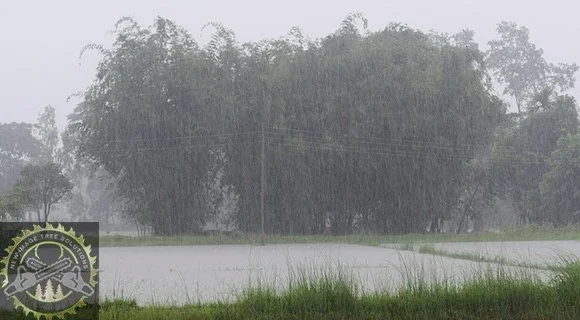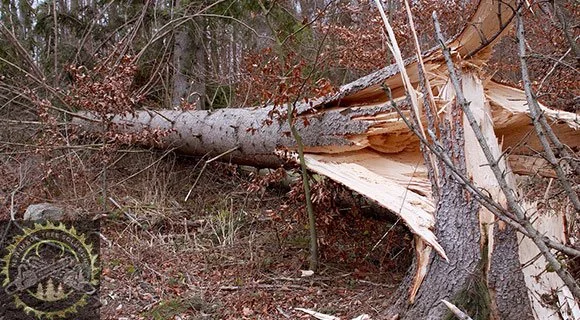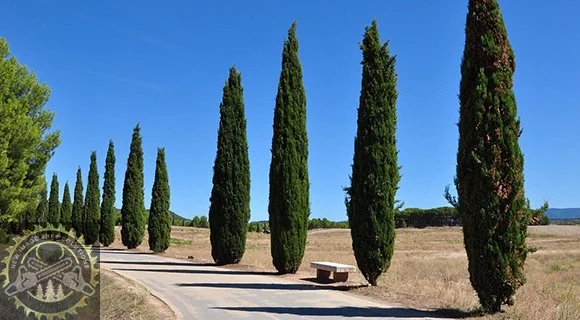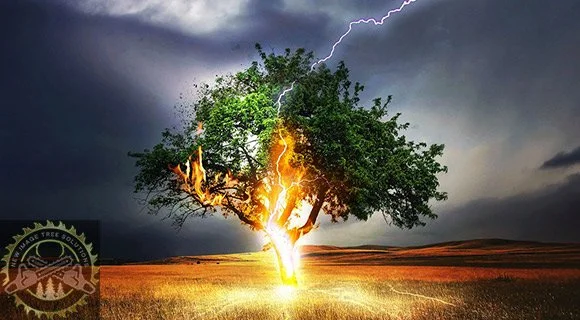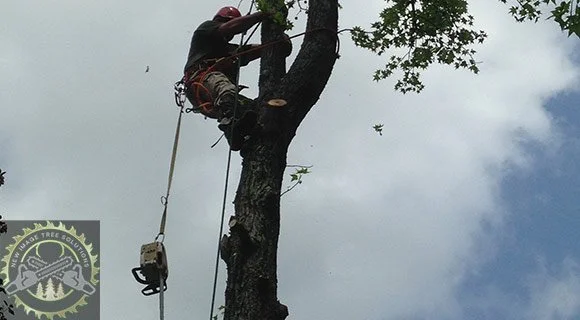9 Reasons Trees Topple in Severe Weather
Are you worried about your trees toppling on your property when severe weather strikes? Understanding why they fall helps property owners make coherent decisions about tree care, safety, and prevention.
New Image Tree Solutions gathered information on Roswell, Georgia, weather, the factors leading to trees toppling during weather events, what you can do to keep your trees healthy, and when to call a professional.
Roswell, Georgia, Weather
Roswell, Georgia, located in North Fulton County, is susceptible to powerful weather events. Thunderstorms, high winds, heavy rain, and occasional winter storms all bring conditions capable of toppling small and large, mature trees. In spring and summer, Roswell experiences regular thunderstorms, often accompanied by wind gusts exceeding 50 mph. In fall and early winter, tropical storm and hurricane remnants can bring sustained winds and saturated soils that weaken root systems.
1. Weak or Compromised Root Systems
Roots anchor trees to the ground. If roots are shallow, diseased, or damaged, the entire tree becomes unstable.
Examples:
A large oak planted in compacted clay soil develops surface roots with no depth. Heavy rain loosens the soil, and strong winds cause it to uproot.
A maple tree near a driveway has had its roots repeatedly cut to accommodate pavement. The next storm sends it crashing down.
2. Saturated Soil After Heavy Rain
Too much water softens soil, reducing a tree’s grip and increasing risk of toppling.
Examples:
A pine tree on a slight slope leans after days of heavy rain. A 30 mph wind finishes the job.
Waterlogged soil in a backyard causes a mature birch to fall unexpectedly during a light storm.
3. Structural Defects in Trunks or Branches
Cracks, cavities, and rot can weaken a tree’s core strength, making it more prone to breakage.
Examples:
A pecan tree with a hollow trunk splits during high winds.
A large branch with an old crack breaks and damages a roof during a summer thunderstorm.
4. Overextended or Unbalanced Canopy
Trees with excessive growth on one side or overextended limbs are vulnerable to wind.
Examples:
A sycamore with uneven canopy growth leans over a garage and loses two limbs during a wind event.
An unpruned sweetgum with top-heavy branches twists and snaps when wind speed increases.
5. Dead or Diseased Wood
Dead branches become brittle and unpredictable. Diseased wood may appear stable but lacks internal strength.
Examples:
A dead limb on a red oak crashes onto a fence during routine rainfall.
A pine infected with root rot appears healthy but collapses after a mild storm.
6. Shallow Rooting Species
Some tree species are naturally shallow-rooted. This increases fall risk during storms.
Examples:
Bradford pear trees (known for weak roots and branch structure) snap during strong gusts.
Leyland cypress with surface roots will fall in clusters when the soil is saturated.
7. Poor Planting Location
Trees too close to buildings, sidewalks, or other structures often have compromised growth or root damage.
Examples:
A cedar planted inches from a foundation has restricted roots. It topples onto a porch in high wind.
A willow near a water main shows signs of instability and falls after heavy rain.
8. Neglected Pruning
Without routine pruning, trees become overgrown and more susceptible to wind damage.
Examples:
An untrimmed hackberry with multiple leaders splits apart during a lightning storm.
A large elm with no previous pruning drops several limbs on parked vehicles during a weather alert.
9. Impact From Lightning or Wind Gusts
Lightning strikes and sudden wind bursts can instantly destroy even healthy trees.
Examples:
A pine in open space is struck by lightning and explodes outward, scattering debris.
A healthy oak catches a microburst wind gust and uproots, taking part of the lawn with it.
When to Call an Arborist
Any time a tree shows signs of leaning, cracking, or dead branches, it's time to call a certified arborist. An arborist can assess risk, recommend solutions, and help prevent dangerous failures during storms.
Contact an arborist if:
A tree has visible decay or fungus at its base
Limbs overhang your home or power lines
The tree leans noticeably, especially after rain
There’s recent damage to roots or trunk
Read more about tree diseases HERE.
Why Call New Image Tree Solutions 404-680-0041
New Image Tree Solutions offers experienced, ISA-certified arborists who understand Roswell’s unique weather and soil conditions. Our team specializes in:
Risk assessments and storm preparation
Tree removal and emergency response
Disease diagnosis and treatment
Pruning and crown balancing
We utilize modern equipment and safe, efficient practices. With fast, local service and a focus on long-term tree health, New Image Tree Solutions is Roswell’s trusted name in residential and commercial tree care.
When to Prune or Remove Trees for Safety
Trees should be inspected annually and pruned as needed to maintain balance, health, and airflow. Strategic pruning helps:
Reduce wind resistance
Remove dead or hazardous limbs
Improve branch structure
Best times to prune:
Late winter or early spring for most species
Immediately before hurricane season for storm preparation
Tree removal may be necessary if:
The tree is dead or dying
Structural defects cannot be corrected
Root systems are severely compromised
Key Considerations for Trees Toppling in Severe Weather
Severe weather in Roswell, Georgia, can turn even the healthiest-looking trees into hazards. While high winds, saturated soil, and lightning strikes contribute to tree failure, hidden weaknesses often go unnoticed until it's too late. Trees weakened by disease, root damage, poor structure, or environmental stress are especially vulnerable during storms.
Many trees that topple during heavy weather show no external symptoms. Internal decay, root rot, or insect damage can undermine structural integrity without immediate signs. In storm-prone areas, recognizing early risk factors and taking preventive measures can preserve your property and safety.
Here are critical signs and conditions that increase the likelihood of tree failure in severe weather:
Hidden Disease: Fungal and bacterial infections (like Armillaria root rot, anthracnose, bacterial leaf scorch, and pine wilt) degrade internal wood and weaken roots, trunks, and branches. Infected trees may suddenly fall after wind or rain, even if they look healthy on the outside.
Poor Root Systems: Shallow roots, root girdling, or previous construction damage reduce a tree’s grip in wet soil. After several days of rain, trees with compromised roots often lean or uproot without warning.
Structural Defects: Co-dominant trunks, including bark, and old storm damage create unstable branching. These weaknesses act as failure points when exposed to wind shear or saturated conditions.
Pest Activity: Insects like borers, beetles, and termites compromise wood from within. Trees already struggling with drought or disease will attract these pests (accelerating decay and increasing fall risk).
Environmental Stress: Prolonged drought, flooding, and urban development can stress tree systems. Stress weakens natural defenses, making them more susceptible to disease, rot, and windthrow.
What to Watch For:
Cracks in trunks or large limbs
Fungal growth at root collar
Sudden thinning of canopy
Peeling bark or hollow sounds when tapped
Branches that drop unexpectedly
Leaning trees or exposed roots
A certified arborist can identify these warning signs and recommend pruning, cabling, or removal when necessary. Trees should be evaluated regularly—especially before storm season.
New Image Tree Solutions provides expert inspections and emergency services. They help reduce your storm damage risks and preserve healthy landscapes. Early action prevents costly damage, protects loved ones, and extends your tree's life.
Trees Topple in Severe Storms
In this article, you discovered crucial information on Roswell, Georgia, weather, the signs that lead to trees toppling during weather events (severe or mild), what to do to keep your trees healthy, and when to call for professional assistance.
Proactive tree care, regular inspections, and expert guidance from certified professionals (like New Image Tree Solutions) can make a significant difference in storm safety.
Ignoring tree health and condition can result in catastrophic damage when they lose stability and several tons of force and destruction come crashing down on your property.
Sources:
site.extension.uga.edu/forsyth/2023/09/hazardous-trees-2
treesaregood.org/Portals/0/TreesAreGood_Storm%20Related%20Tree%20Damage_0721.pdf
arborday.org/tree-care-maintenance/health-issues
(404) 680-0041


